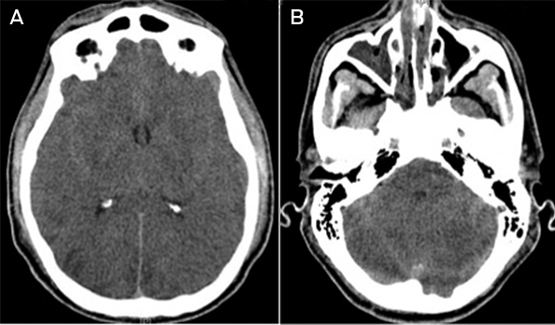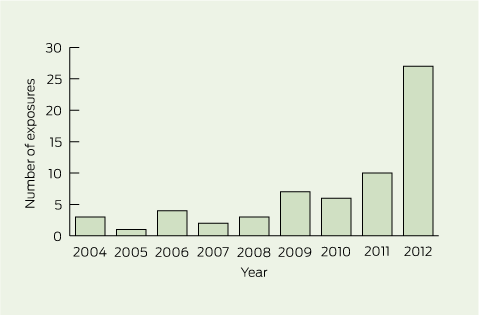Australia is behind the times on the medical use of cannabis
The debate about the medical use of cannabis in Australia has become confused with the proposal for a formal clinical trial instead of proceeding to legislation in New South Wales, the Australian Capital Territory and Victoria. Debates about prohibition of cannabis have a long history,1 as has the proposal for medical cannabis in Australia.2 Politicians are nervous about being “soft on drugs”, especially before an election. The clinical trial proposed, if successful, presumes that cannabis would then be approved and regulated as a pharmaceutical substance.
We need to be across the facts and options. Cannabis can never be a pharmaceutical agent in the usual sense for medical prescription, as it contains a variety of components of variable potency and actions, depending on its origin, preparation and route of administration. Consequently, cannabis has variable effects in individuals. It will not be possible to determine universally safe dosage of cannabis for individuals based on a clinical trial.
Extreme views in the debate about any form of cannabis decriminalisation are advanced with almost religious fervour. On the one hand, some assert that cannabis is a dangerous, highly addictive drug which causes schizophrenia, and that any move to relax prohibition would be a disaster. This view defies published evidence. On the other hand are those who have used cannabis for years, swearing it causes no trouble. They see prohibition as a totally inappropriate curb on individual freedom.
Facts about cannabis
The assertion that cannabis is highly addictive ignores firm evidence. The most authoritative review comparing addictiveness of drugs rates physical dependence on a scale of 0–3.3 Heroin is ranked 3; tobacco, barbiturates and benzodiazepines, 1.8; alcohol, 1.6; and cannabis, 0.8. Cannabis may, of course, be a pathway to more addictive drugs if obtained from illegal sources that also offer powerful alternatives.
The view that cannabis carries no risk likewise ignores much published evidence.4 Recent Australian and New Zealand longitudinal studies show significant social, behavioural, educational and mental problems with frequent use of cannabis by young people (aged 15–25 years). Psychosis occurred more frequently following long-term heavy use than among non-users, but no schizophrenia was noted in this study.5 A recent review of the evidence implicating cannabis in the development of schizophrenia found only that it can accelerate its expression at an earlier age and may aggravate existing schizophrenia. Of course, non-users also develop schizophrenia.6 Others have identified heavy cannabis use in the young as a possible factor in later psychosis, without specifying schizophrenia.7
Australians, together with citizens in the United States and New Zealand, are the world’s greatest users of cannabis per head of population.8 Prohibition has failed to prevent widespread use and young people report that they can readily access it.9 Young people need to be strongly dissuaded, on health grounds, from frequent or even regular use of cannabis, but this has little relevance to cannabis used for medical purposes or the debate surrounding it. Potential medical users are often, for example, in the later stage of a battle with painful cancer, finding problems with morphine, other analgesics and nausea with chemotherapy. Others seek relief from painful conditions such as muscle spasm in multiple sclerosis. Cannabis is believed to reduce seizures in Dravet syndrome, a rare genetic myoclonic epileptic encephalopathy beginning in infancy.10 Most parents of affected children (84%) report much lessened frequency or abolition of seizures with medical cannabis. They should have continuing access to it until trials using purified cannabidiol (CBD), believed to be the active component for these children, provide a superior agent.
We are behind the times on medical cannabis. Currently, 23 states in the US have legalised use of cannabis for medical conditions, as has Canada since 2001. Other countries approving it include Israel, Holland and the Czech Republic. Portugal, in 2001, removed penalties for personal possession and use of all illicit drugs, but with rigorous administrative processes to handle problem use. Eliminating prohibition is not a disaster if there are sensible processes to control drug-related harms.11
An Australian and US study found that removal of legal action and possible imprisonment for possession and use makes no difference to the patterns of use of cannabis.12 World Health Organization mental health surveys of 17 countries found that “countries with stringent user-level illegal drug policies did not have lower levels of use than countries with liberal ones”.13 There is no rational basis for the view that weakening prohibition to permit use for medical conditions would lead to a surge in general use.
Cannabis has at least two important active elements: δ-9-tetrahydrocannabinol (THC) and CBD. The former is responsible for the high of intense comfort and pleasure when presented to the brain in sufficient quantum. Its presence is greatly enhanced by heating marijuana above 170°C, as in a bong, converting the inactive precursor THC-A to THC. THC infused at high dose can produce a powerful euphoria but also hallucinations and other psychotic effects in some normal individuals, followed by complete recovery.14 CBD, on the other hand, does not give a high but has other effects including suppression of nausea and pain. It counteracts some of the effects of THC.15 The plant Cannabis sativa has more than 100 alkaloids with potential to influence the cannabis receptors CB1 and CB2, which respond to normal cannabinoids.16
Response to cannabis varies from person to person, partly due to genetic variation among users.17 The content of THC and CBA varies among different strains of marijuana. Some users vary the type of plant they use to benefit from these different effects.
What would a clinical trial entail?
Cannabis as such cannot be subjected to a double-blind clinical trial. Participants would have to agree to be treated with it, hoping to gain relief from distressing pain or nausea. Each would become aware whether they are receiving cannabis or a placebo. Dose would have to be adjusted for each individual. Any trial would use cannabis with multiple active constituents, varying with the source of marijuana used and its preparation.
If a person in the late stages of painful cancer seeks the euphoria of THC, why should they not have it? They must have a right to withdraw from a trial if it does not suit them. Participants in the control group may demand to transfer to the active arm on seeing others feeling better. Cannabis should supplement morphine for pain as necessary, not replace it.
Are there barriers in principles of medical practice?
There may be medicolegal issues if a medical practitioner prescribes a preparation of unquantified potency or with an incomplete description of its constituents and without full knowledge of side effects and their extent. But this has not proved to be a problem in those US states where the patient makes the choice to use cannabis following a medical consultation. A recent readership survey conducted by the New England Journal of Medicine sought comment on a published case report of a cancer patient where a senior psychiatrist and a pain management specialist had both recommended against use of cannabis. Seventy-six per cent of respondents from several countries responded that they would recommend use of cannabis in such a case.18 Medical marijuana is now widely used. A recent US study found that the states with medical cannabis use over 10 years had a lower death rate from opioid overdose than those without.19
Why not go ahead with legislative approval?
The real question is whether a person who is suffering pain and distress can access cannabis on their own initiative, following medical consultation as to their symptoms. They can access other herbal remedies from authorised providers such as health food stores or a pharmacist. If legislation permits sale to people suffering from a condition diagnosed by a doctor and scheduled in legislation, there should be no problem with provision of cannabis by this route without waiting for completion of a clinical trial. This is especially the case with Dravet syndrome patients where a formal clinical trial with a proprietary CBD concentrate20 may take several years to complete.
We should ensure that cannabis is provided only to approved users who should be registered. As there is no legal supplier, users should have permission to grow their own plants — up to 10 at any one time — but be forbidden from selling their product. Any proposal for commercial production should be subject to strict control, with analysis of THC, THC-A and CBD content by a government toxicology laboratory for both cannabis oil and the leaf product. Venues for sale, presumably pharmacies or health food shops, should be registered. People aged between 15 and 25 years should be excluded as recipients, except where it is provided specifically for a cause covered by legislation. The legislation should also make cannabis available for medical research.
In summary, use of cannabis should be decided by the patient, following medical advice about the condition from which they seek relief, with patients being registered under state legislation. If there is to be a nationally approved trial, it should be one of documenting clinical experience from cannabis use under state legislation of the kind foreshadowed by recently elected Victorian Premier Daniel Andrews.21

 more_vert
more_vert


